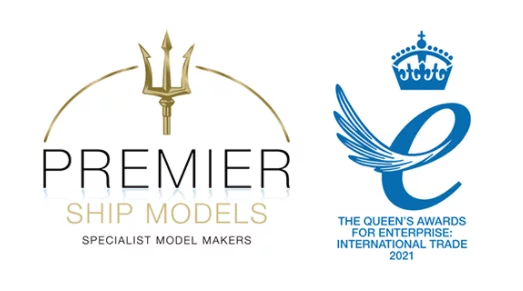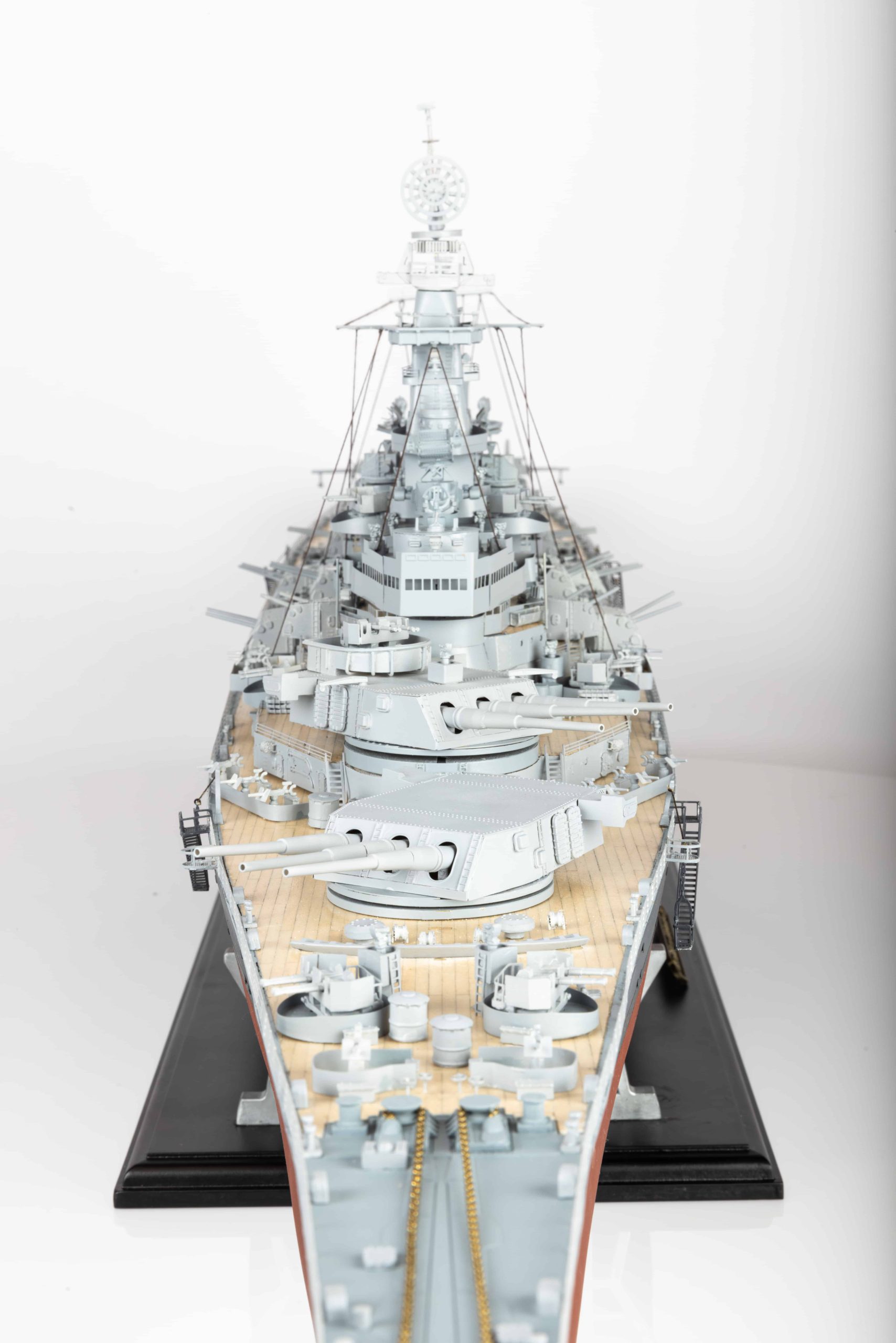Starting a model boat kit can be both a daunting and exciting prospect. Whether you’re a first time model maker or an experienced one, you will always be faced with several challenges when completing a model. In this blog, we explore the most common challenges and offer our advice for overcoming them.
Achieving total accuracy
If you spend months building a model, then the last thing you want is for the finished product to be an inaccurate replica. This is one of the main challenges model makers can face during the build. The important thing is to ensure that each step of the building process is completed as accurately as possible before you move on to the next step. For example, when you are assembling the skeleton, you need to check that each frame is at a 90 degree angle to the keel. If this is not completed correctly, the hull will looked twisted after you plank it and you won’t be able to place the decking properly. Eventually, you will also struggle with placing the smaller details and the finished model will look more like a toy than a scale model.
In order to achieve total accuracy it is important to never rush and to always show patience. It is better to test, for example, if a small detail fits properly before you glue it down. When something needs sanding, ensure that you sand it down enough and if you sand it down too much then you should start again. You should take your time with every part of the process, making sure that it has been finished perfectly before you move on to the next step and in turn this will result in the finished model being accurate.
Knowing your materials
If it’s your first time building a model or your first time making a model with wood, you could face the challenge of not knowing how to work with the materials properly. Even if you have made wooden models before, each kit manufacturer will produce their models in different types of wood and therefore as an experienced modeller you could face the same challenge. For this reason, it is important to test on a piece of scrap wood before proceeding with the actual model. You should take note of how the wood reacts to the tools you are using – such as drills, saws, sandpapers etc. For example, how much pressure you should apply with the sandpaper to achieve the desired effect. The same principle also applies to the use of the tools, if you have not worked with them before. You should practice using them before you start building the model. For example scalpels can be very sharp and if you are not careful then you could cut yourself accidentally.
Some model boats have railings and the kit manufacturers will supply metal wire for you to construct the railings. In this case, it is again recommended by us to take a little piece of the wire and practice to see how it bends and the process you need to follow in order to accomplish the correct look.
As for glues, it is good to check how the paint looks on a piece of scrap wood or even paper before applying it to the model. You are looking to check if the paint is the right colour and consistency. You should not use a lot of glue, the tip is to use a toothpick and just a drop of glue, placing the detail exactly where you want it. Always hold a cotton bud in the other hand so that you can clean up any spillage. Again, you might want to practice working with the glue before you start building the model.
The overall principle is that you should know a great deal about the materials you are working with and the tools you are using before you start making the model. This will ensure that the finished product is of better quality.
Failing to plan is planning to fail
The temptation when you first receive a model boat kit is to open it and start building. This is often where new model makers go wrong, as a huge part of the building process should involve planning. The first thing you should do is take all the parts out of the box and number them to reflect the order in which they should be assembled.
Secondly, you should study the plans and get to know them well, to the point where you can pick out a detail or part from the box and know exactly where it fits on the model. You should then make a list of all the main stages, for example constructing the skeleton, planking, installing the decks, the small details and the rigging. This will help you to understand where you are in the project as you go along.
We would recommend that you also do some research about the real ship and how it was made before you start building. This will help you to better visualise what the end product will look like as you are building. You can also research similar ships of the same era. There is a great deal of information from museums and lots of information on the web.
If you read through the instructions and study the plans, you will know what additional tools, paints and glues you will need to complete the model. It is better to do this at the beginning of the process rather than continuously having to source other materials whilst you are building.
Finally, it is good to be in the right frame of mind before you start building the model. Building a model requires a great deal of patience and focus. If you are building a kit just to have the finished product then we would recommend you to buy a display model rather than a kit. The purpose of model kits is not just about the end product but also about the process to get there, where you will learn a great deal. If you manage to stay focused throughout the process, then you will look at the end product with more pride and the people around you will know how much time and effort you put in to the build.
Gaps in your instructions
One challenge new modellers face is following the instructions that come with the model kit. A lot of the kits are manufactured overseas in Europe, which means sometimes the translation of the instructions in to English can be a little confusing. We want to stress that it is always good to follow the instructions that you get with the kit, because the kit has been designed to be built following the step to step guide presented in the instructions.
Kits overall were designed to suit hobbyists or amateur model makers by simplifying the construction process and this is why it is important to follow the instructions. If there are any gaps in the instructions or parts which are unclear, you can read books about the techniques of model making that have been written by professionals. There are books available about the process of planking and how to read plans for example. This knowledge will help you to make a decision about how to proceed in the build process where the instructions are not helping you.
You can also research on the web to see finished pictures of the same model. This is an advantage of having a small number of manufacturers making the same models, it is almost guaranteed that somebody else has built it before you. By looking at pictures of the same model already built, you can make a decision about how to proceed. There are forums available where you could ask your questions to another model maker who has made the same model as you. Our advice is to follow the instructions as closely as you can and if you get stuck, we have given you a few possible solutions to overcoming the problem.
Dealing with the small details
Some new model makers struggle with the smaller details on the model because they do require more patience than the assembly of the hull and decks. The advantage of smaller details is that they can be built separately from the model and then placed on after that. Small details will include cannons, stairs, hatches etc. and they do make the difference between a model that is mediocre and a model that is a masterpiece. For this reason alone, you need to spend more time on the smaller details than the bigger constructions like the hull/decks.
If you are ever mentally lacking concentration or if your mind is elsewhere, it is better to leave the smaller details and come back later. Smaller details can be fragile and if you lose your concentration for one second then you can damage them. If you damage the smaller detail then you will need to make another from scratch, as most kits will only provide the necessary materials to make one. If you don’t have the skills to make it from scratch, then you could find yourself a bit stuck!
Even if you did have the skills to make the small detail from scratch, it is important to note that a small detail can be made from lots of different materials. A cannon for example – the carriage is made from wood with some metal pieces, the cannon itself can be plastic or metal and the wheels could be made from wood and it could even have some rigging to attach the cannon to the deck. This means you would need to source a lot of different materials in order to reproduce the small detail.
Our advice therefore is that when working with the small details, do not rush and ensure that you are extremely patient.
Rigging
Rigging can be both challenging and daunting to any new or experienced model maker. It is the longest part of the process of building the model. The rigging process can take just as long as the hull, decks and small details put together. Our advice is to understand every section of the rigging and why it is there and the purpose it serves for the ship.
There are two types of rigging (standing and running). Standing rigging is to support the masts, booms, yards and sails and gives the ship its strength. Running rigging is what you use to control the same and allows the ship to be sailed. In model making you start with the standing rigging and then move on to the running rigging.
In beginner kits, the rigging is less accurate but much easier to assemble and the instructions for assembly are more succinct and clearer to follow. The more difficult kits put less emphasis on the instructions for completing the rigging and instead provide detailed rigging and sailing plans for use by the model maker. This requires more experienced model makers to do their own research to find where each rope starts and ends and how they are fastened/connected between each of the structures.
In general the models will have only 2 to 3 thicknesses of rigging, which is different from the real ship. The standing rigging for example on real ships has very thick rope and is much darker as it has been treated with either wax or oil to make it strong. On the real ship you would have huge knots as the rigging has to be strong enough to hold the whole structure. On a model it’s a little different, which is why we suggest to add glue to the knots to make them stronger. You need to be gentle with the glue as it could drip down on to the deck.
The overall advice for completing the rigging is to take your time and do a lot of research to understand why each piece of rigging is there and how it fits together with the whole structure.
Stay focused
It is often a common and recurring theme that people feel challenged in model making as a result of not showing enough patience or focus. Whether it’s the rigging, hull or superstructure, model making requires a great deal of time and effort. In order to achieve a finished model that you are proud of you must be mentally prepared to observe a great deal of patience and although this won’t stop you facing challenges, it will help you to overcome them much easier.
For more tips on model making, stay up to date with all the latest news by following us on the social links below
Customer Reviews
Information


My account
Legal


Follow Us
Follow us to keep up-to-date using our social networks

Copyright © 2024. Premier Ship Models. All Rights Reserved.


